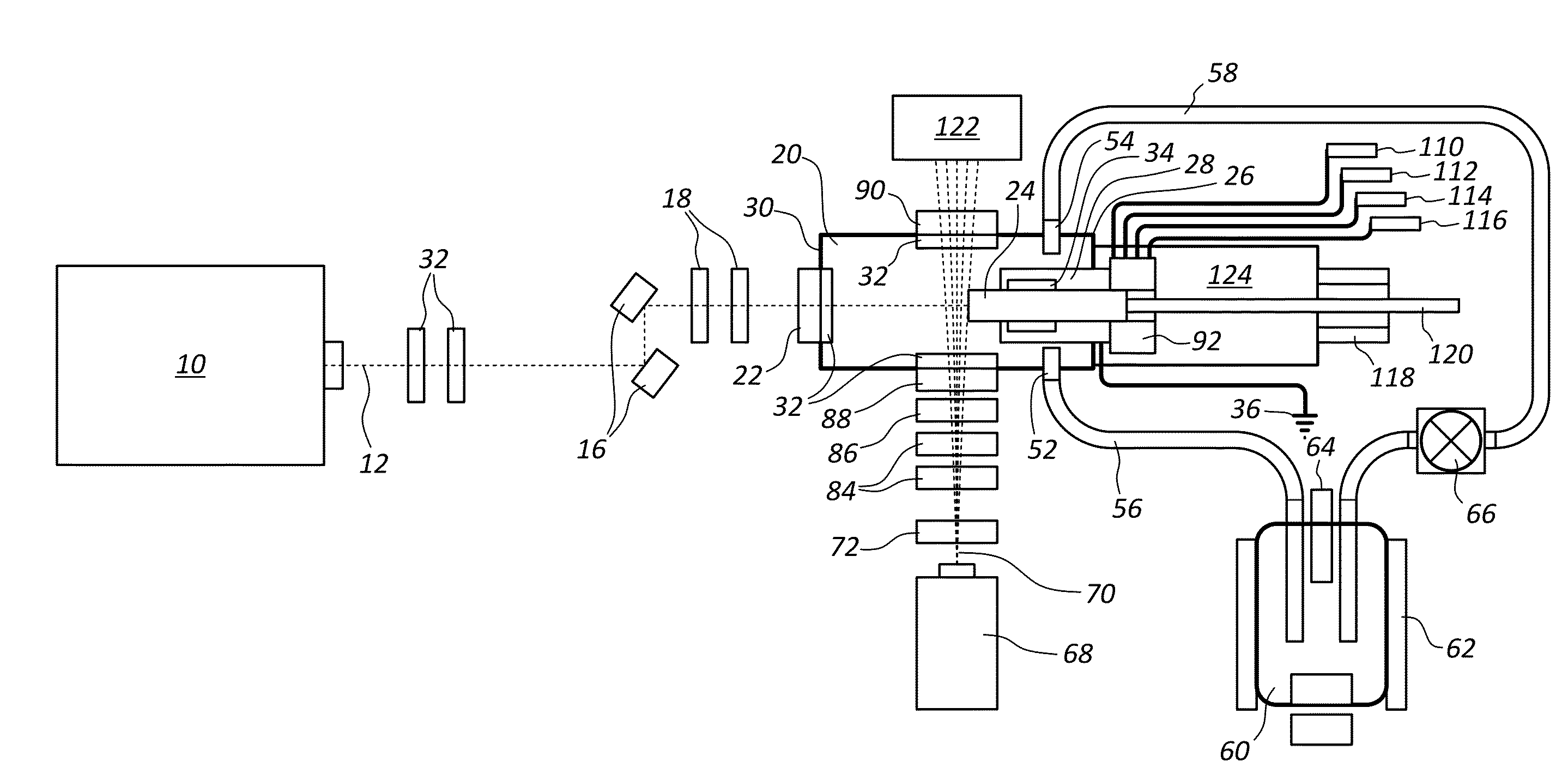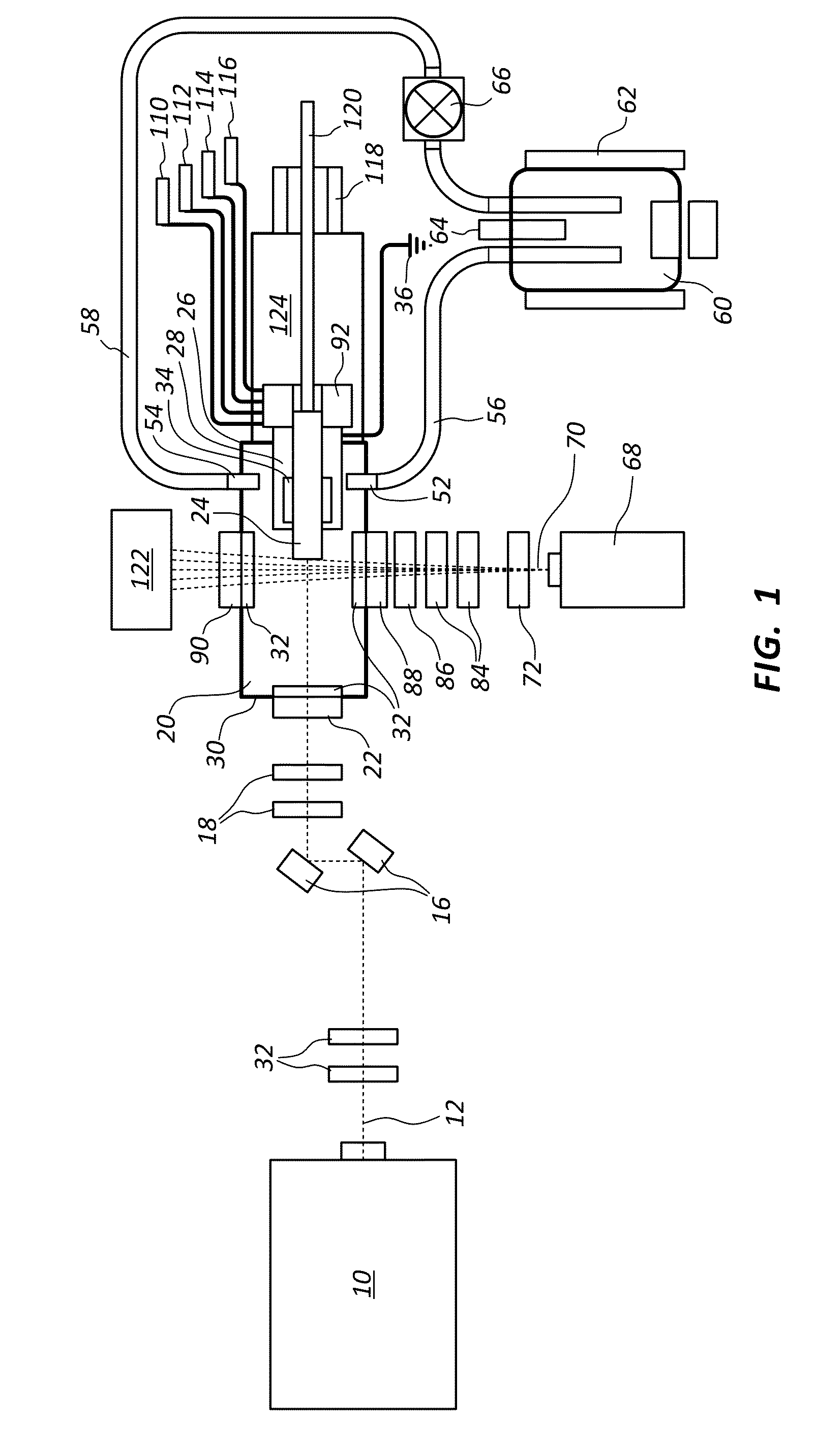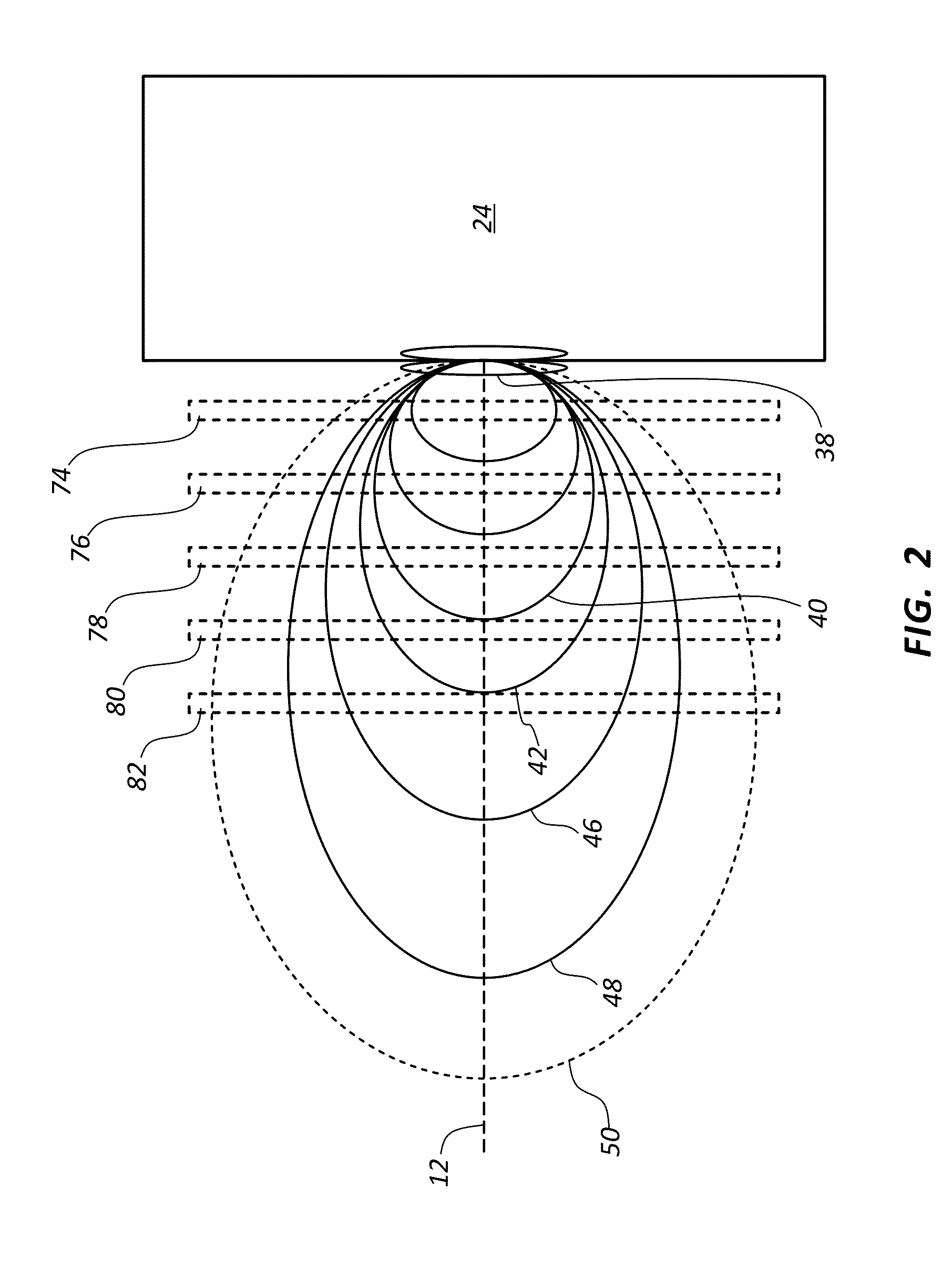System and method for making non-spherical nanoparticles and nanoparticle compositions made thereby
a nanoparticle and composition technology, applied in nanotechnology, metal-working equipment, manufacturing tools, etc., can solve the problems of limiting the quantity of material produced with relatively small ablation material plumes, requiring further processing of non-spherical shapes, and the output of picosecond ablation is relatively small
- Summary
- Abstract
- Description
- Claims
- Application Information
AI Technical Summary
Benefits of technology
Problems solved by technology
Method used
Image
Examples
example 5
Coral Nanoparticles
[0079]Laser ablation of a metal target surface was performed by a Nd-YAG laser at 1064 nm wavelength using 3.9 nanosecond pluses to deliver approximately 500 mJ energy per pulse. The secondary laser was a continuous 532 nm laser with 0.5 W power going into a diffraction grating, which created three distinct electromagnetic fields in front of the gold (Au) target. The distance of the secondary laser in front of the surface of the gold (Au) target was increased from 1 mm (Example 1) to 3 mm, which created coral-shaped nanoparticles instead of spherical-shaped nanoparticles as in Example 1. The process created gold (Au) nanoparticles having a mean diameter between 25-30 nm, with 99+% of those nanoparticles being within 10% of the mean diameter.
example 6
Coral Nanoparticles
[0080]A gold (Au) target was held within a chamber through which flowed triple distilled deionized water. The gold (Au) target was ablated using a primary laser with a 1064 nm wavelength at 80 mJ with a 3 mm focal spot size and with 9 nanosecond pulse lengths. The secondary laser was a continuous 532 nm laser with 0.5 W power going into a diffraction grating, which created three distinct electromagnetic fields in front of the gold (Au) target. The distance of the secondary laser in front of the surface of the gold (Au) target was increased from 1 mm (Example 1) to 3 mm, which created coral-shaped nanoparticles instead of spherical-shaped nanoparticles as in Example 1. The process created coral-shaped gold (Au) nanoparticles having a mean diameter between 70-80 nm, with 99+% of those nanoparticals being within 10% of the mean diameter.
PUM
| Property | Measurement | Unit |
|---|---|---|
| length | aaaaa | aaaaa |
| length | aaaaa | aaaaa |
| diameter | aaaaa | aaaaa |
Abstract
Description
Claims
Application Information
 Login to View More
Login to View More - R&D
- Intellectual Property
- Life Sciences
- Materials
- Tech Scout
- Unparalleled Data Quality
- Higher Quality Content
- 60% Fewer Hallucinations
Browse by: Latest US Patents, China's latest patents, Technical Efficacy Thesaurus, Application Domain, Technology Topic, Popular Technical Reports.
© 2025 PatSnap. All rights reserved.Legal|Privacy policy|Modern Slavery Act Transparency Statement|Sitemap|About US| Contact US: help@patsnap.com



